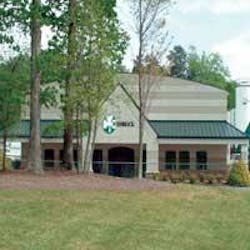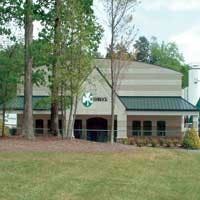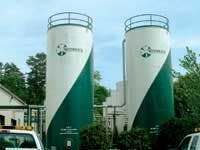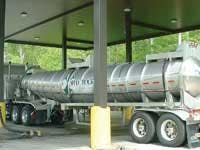Environmental Firm Reduces Chemical Usage with Polymeric Coagulant
Greensboro, N.C.’s Shamrock Environmental Corp. saves nearly $1 million in first eight months of using GE Water & Process Technologies’ KlarAid wastewater treatment product.
Recognized as a leading environmental industry player, Shamrock Environmental Corp. is dedicated to reducing waste liability, maintaining a safe work environment and empowering employees to achieve their best.
The company specializes in supplying reliable, economical waste management solutions to the petroleum, petrochemical, pulp and paper, railroad, transportation, textiles, automotive, utility, chemical and process industries.
Therefore, it was no surprise when Shamrock Environmental took immediate action upon discovering the central treatment process in its new industrial wastewater facility in Greensboro, N.C., which opened in December 2003, was using an unhealthy level of chemicals.
“The acid break technique we were using was effective at treating the wastewater, but the large volumes of chemicals were too expensive and they were harmful to plant equipment and potentially hazardous for employees,” said Steve Davis, the Greensboro plant manager.
The acid break process involved reducing the pH of the wastewater to less than 1.0 by adding enormous amounts of acid, typically sulfuric acid.
“We would go through a tanker full of acid in a couple days,” according to Davis. “And then we would need to bring the pH back up to neutral using a similar amount of sodium hydroxide.”
Another challenge was that the acid break method generated sludge, which needed to be hauled to a separate Shamrock facility for solidification before it could be sent to a landfill. In addition to the labor and transportation cost involved in loading and transporting the sludge, there was also the opportunity cost of tying up the solidification system instead of using it to generate revenue from paying customers.
Solution
Davis turned to GE Water & Process Technologies (W&PT) for a solution that would use fewer chemicals without requiring the offsite solidification of sludge, reduce waste liability, and provide a safer work environment for employees.
Barry Owings, the local W&PT representative, proposed that the acid break method be replaced with a process involving KlarAid PC2710, a polymeric coagulant that requires little or no adjustment of pH.
Bench-top tests were performed on starch blends from seven different vendors. The tests were repeated for several days to account for varying characteristics of the industrial wastewater processed at the Greensboro plant. The polymeric coagulant was selected because it was the only product able to consistently remove colloidal and emulsified material in all the wastewater test samples. Shamrock Environmental began this process in April 2004.
Results
“By switching to PC2710 from the acid break method, we have been able to reduce our chemical usage by over 80%, for a saving of almost $1 million during the first eight-month period,” reports Davis.
“The reduction of chemical usage means a safer working environment for our employees. They used to have to unload dangerous chemicals six or seven times per shift, a process that is now performed only once each day.”
Davis also takes pride in the environmental benefit of reduced chemical consumption. “With our new process, significantly fewer chemicals need to be manufactured and transported to our plant; we are consistently producing higher quality water.”
An additional benefit is that the polymeric coagulant is specifically designed to form dense, easily dewatered sludge. The Greensboro plant utilizes a filter press to dewater the sludge prior to sending to a landfill and there’s no longer a need to haul sludge for off-site solidification.
Conclusion
Shamrock Environmental saved $1 million during the first eight months of using the KlarAid product. Since April 2004, Shamrock has continued to save in excess of $80,000 a month. The chemical usage drop has been steady at 80%. And with less chemicals, the working environment is less vulnerable to potentially dangerous accidents. There also are fewer hazardous materials handling and reporting requirements to meet, meaning more time for plant staff to focus on higher productivity activities. IWW
For more information, contact Ellen Mellody at GE Water & Process Technologies, 215-942-3307 or visit www.gewater.com. Shamrock Environmental can be found at www.shamrockenviro.com.



